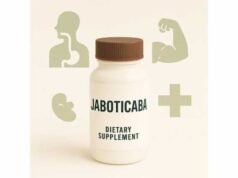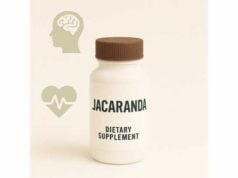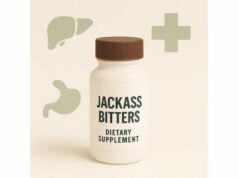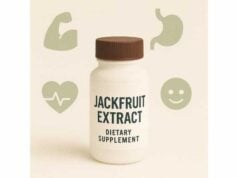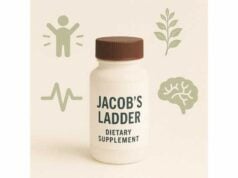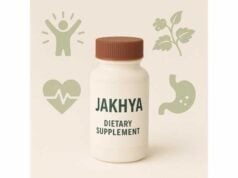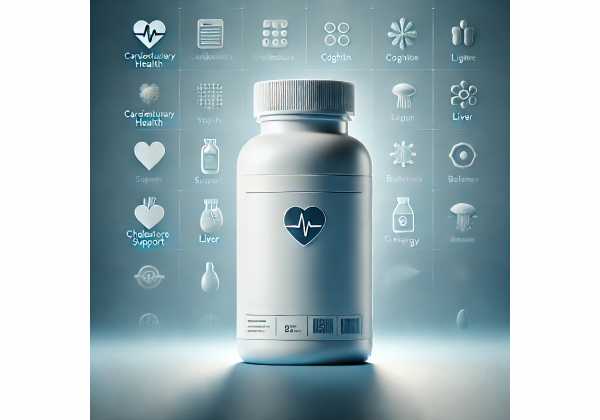
Jellyfish collagen is a marine-derived protein obtained from species such as Rhopilema esculentum and Rhizostoma pulmo. Interest in this ingredient has grown because it offers a non-mammalian alternative to bovine and porcine collagen, with a distinctive amino acid profile and excellent biocompatibility for food, cosmetic, and biomedical applications. In nutrition, jellyfish collagen is sold as powders, capsules, and ready-to-drink beverages aimed at skin hydration, joint comfort, and recovery. In materials science, it is explored for wound dressings, scaffolds, and hemostatic sponges. Compared with fish collagen, jellyfish collagen tends to have a lower denaturation temperature and a slightly different ratio of hydroxyproline, which influences solubility and gelling behavior—useful for beverages and soft gels. This guide translates current science and best practices into practical steps: what jellyfish collagen is, what benefits are realistic, how to choose a preparation, how much to use, who should avoid it, and how to pair it with lifestyle habits for sensible results.
Quick Overview
- Collagen peptides from jellyfish may support skin repair and wound healing potential in early research; food-grade forms contribute to daily protein and glycine intake.
- Typical supplemental range: 2.5–10 g/day of hydrolyzed jellyfish collagen peptides taken with meals for at least 8–12 weeks.
- Safety caveat: rare case reports describe jellyfish-related allergy; stop use and seek care if you develop hives, wheeze, or swelling.
- Avoid concentrated extracts if you have a known jellyfish allergy, a history of severe seafood reactions, or have been advised to avoid marine collagen.
Table of Contents
- What is jellyfish collagen?
- What benefits to expect and how it seems to work
- How to use it correctly at home
- Exact dosage and timing by preparation
- Side effects, interactions, and who should avoid it
- How to choose quality products and store them well
What is jellyfish collagen?
Jellyfish collagen is primarily type I–like collagen extracted from the mesoglea (the gelatinous layer) of edible jellyfish. It’s processed as either native collagen (acid- or pepsin-soluble) for biomaterials, or hydrolyzed collagen peptides for supplements and functional foods. Hydrolysis breaks long triple-helix structures into shorter peptides (often 1–5 kDa), improving solubility, taste, and absorption.
How it compares to other sources.
- Versus bovine/porcine collagen: Jellyfish is non-mammalian, a feature some consumers prefer. Its lower denaturation temperature makes it easier to dissolve in cool liquids, and its peptide profile is rich in glycine, proline, and hydroxyproline—the same amino acids that support connective tissue turnover.
- Versus fish collagen: Both are marine; fish collagen commonly targets beauty-from-within and joint health. Jellyfish collagen brings biomedical appeal thanks to encouraging in vitro and animal data on wound closure and biocompatibility.
- Versus plant “collagen boosters”: Plants don’t make collagen; plant products may supply vitamin C or amino acids, but they aren’t collagen. Jellyfish collagen supplies actual collagen peptides.
Where it’s used.
- Nutrition: powdered peptides, gummies, RTDs, and blends with vitamin C, hyaluronic acid, or coenzyme Q10.
- Topical and devices: hydrogel sheets, hemostatic sponges, and scaffolds designed to support moist wound healing environments.
- Research: cell culture scaffolds for cartilage and skin, and composites that pair jellyfish collagen with chitosan or algal extracts.
Key properties.
- Biocompatibility: supports cell adhesion and proliferation in lab models, making it suitable for scaffold fabrication.
- Solubility and mouthfeel: hydrolyzed forms dissolve readily and are neutral-flavored, working well in beverages.
- Amino acid pattern: high glycine content (often ~30%) plus proline and hydroxyproline underpin collagen’s structural roles.
Bottom line. Think of jellyfish collagen as an alternative marine collagen with unique processing advantages and promising lab evidence for tissue applications, while nutrition use follows similar principles as other collagen peptides.
What benefits to expect and how it seems to work
Skin and wound support (early human relevance, stronger preclinical signals). Hydrolyzed jellyfish collagen (JFC) provides bioactive di- and tripeptides—most notably proline-hydroxyproline (Pro-Hyp) and hydroxyproline-glycine (Hyp-Gly)—that can appear in the bloodstream after ingestion. In lab and animal models, these peptides increase fibroblast migration, collagen deposition, and re-epithelialization rates. For everyday users, the practical outcome is a skin-supporting protein that may complement skincare routines and balanced diets. Clinical-grade data specifically on jellyfish-derived peptides are limited; much of the robust human data comes from fish collagen. It’s fair to expect subtle improvements in hydration and skin feel over 8–12 weeks when paired with adequate calories, micronutrients (vitamin C, zinc), and sun-smart habits.
Joint comfort and mobility (indirect rationale). Collagen peptides supply glycine, proline, and hydroxyproline—the very amino acids cartilage and ligaments rely on. Human trials with marine collagen from fish report improvements in joint comfort and function; jellyfish-specific trials are sparse. Mechanistically, peptide fragments may signal local cells and contribute to matrix turnover, but expectations should remain moderate until jellyfish-focused RCTs mature.
Tissue engineering and hemostasis (medical-device context). Outside nutrition, jellyfish collagen sponges and scaffolds show favorable cell adhesion and low cytotoxicity in lab testing. Hemostatic sponges based on jellyfish collagen have demonstrated rapid clot support in animal models. This isn’t a take-home medical claim for dietary users—it illustrates why the ingredient is attractive in biomedical design.
Metabolic and inflammatory balance (animal data). In high-fat diet mouse models, jellyfish collagen hydrolysate has reduced inflammatory markers and oxidative stress while shifting gut microbiota composition toward a more favorable profile. This suggests potential gut–skin–immune cross-talk, yet these are early-stage mechanistic findings. Nutrition users should view them as supportive signals, not disease-treatment evidence.
What not to expect. Jellyfish collagen is not a substitute for balanced protein intake, medical wound care, or targeted therapy for skin disorders and arthritis. Benefits are typically incremental, accumulate over weeks, and depend on overall diet quality, sleep, and sun exposure habits.
Practical takeaway. If you already use collagen, switching to a quality jellyfish source can be reasonable based on solubility and sourcing preferences. If you’re new to collagen, expect subtle skin comfort and hydration changes over a few months, with best results when you also support micronutrient needs and general skincare.
How to use it correctly at home
Pick the right form for your routine.
- Hydrolyzed collagen peptides (powder or capsules): Most versatile; dissolves in water, juice, smoothies, yogurt, or coffee. Look for declared species (e.g., Rhopilema, Rhizostoma) and peptide content per serving.
- Native collagen (for culinary gels): Less common in supplements; more relevant to R&D or specialty culinary textures.
- Blends: Collagen paired with vitamin C, hyaluronic acid, ceramides, or coenzyme Q10 may enhance perceived skin hydration or elasticity; choose blends with transparent per-ingredient amounts.
When to take it.
- Any time of day, preferably with meals to improve tolerance and protein utilization.
- For skin goals, consistency over timing matters most. Take it daily for 8–12 weeks before judging results.
How to mix for best results.
- Cold liquids: Add powder first, then liquid; whisk or shake to disperse.
- Hot liquids: Stir directly into tea or coffee—jellyfish peptides dissolve readily without clumping.
- Smoothies or bowls: Pair with vitamin C–rich foods (citrus, berries, kiwi) which support collagen cross-linking in the body.
Stacking with other nutrients.
- Vitamin C (75–120 mg/day) supports normal collagen formation.
- Protein baseline: Collagen is incomplete (low in tryptophan). Treat it as a functional add-on to a day that already includes complete proteins (dairy, eggs, legumes, soy, meat, fish).
- Hyaluronic acid and ceramides: May complement skin hydration; choose modest, evidence-aligned doses rather than megadoses.
How long to try it.
- Commit to 8–12 weeks. Track simple markers: morning skin feel, makeup set, fine-line appearance, or photo logs under similar lighting. For joints, note activity tolerance and stiffness on waking.
Who benefits most.
- People aiming for skin hydration support, post-sun routine reinforcement, or gentle joint comfort alongside exercise and mobility work.
- Those who prefer non-mammalian collagen sources for personal, cultural, or dietary reasons.
Who should pause or get guidance first.
- Anyone with a history of jellyfish reactions or severe seafood allergy.
- People under specialist care for wound management, autoimmune disease, or major surgery should follow clinical advice before adding supplements.
Exact dosage and timing by preparation
Because product strengths vary, dose by collagen peptide grams per day, not by scoop size. The ranges below reflect common practice for hydrolyzed collagen and align with early jellyfish-collagen studies and broader marine-collagen experience.
Adults (oral use):
- Hydrolyzed jellyfish collagen peptides (powder): 2.5–10 g/day, taken once daily or split into 2–3 doses with meals.
- Entry plan: 2.5–5 g/day for 2 weeks to assess tolerance.
- Target plan: 5 g/day for skin hydration and general support.
- Upper practical range: up to 10 g/day for individuals who tolerate collagen well and want a fuller serving.
- Capsules/tablets: Follow the label; typical totals equal 2.5–5 g/day when combining capsules.
- Duration: 8–12 weeks continuous use before reassessment; ongoing daily intake is acceptable if well tolerated.
Timing tips.
- Take with food to minimize GI upset and to co-deliver vitamin C and other cofactors.
- For training days, one serving post-exercise with vitamin C–containing foods can support collagen-rich tissues when paired with load-bearing activity.
Hydration and protein balance.
- Increase water intake by 1–2 glasses/day when you add collagen to avoid constipation.
- Remember that collagen is not a complete protein source. Keep overall protein intake aligned with your needs (often 1.0–1.6 g/kg/day for active adults) using complete proteins.
Special situations.
- Peri-procedure: If you’re scheduled for surgery or dermatologic procedures, follow your clinician’s protocol; some teams ask patients to pause nonessential supplements 1–2 weeks beforehand.
- Sensitive digestion: Start at 2.5 g/day, use with meals, and increase gradually.
When to stop or adjust.
- New or worsening rash, itching, hives, wheezing, or facial swelling—stop immediately and seek care.
- Persistent bloating or loose stools even after dose splitting—reduce the dose or consider alternate protein strategies.
Side effects, interactions, and who should avoid it
Typical tolerability. Hydrolyzed jellyfish collagen is generally well tolerated. The most common issues are mild and digestive—temporary fullness or looser stools at higher intakes. Splitting doses and taking with meals usually helps.
Allergy considerations.
- Rare case reports describe anaphylaxis after eating jellyfish products; conversely, small challenge studies have found tolerability in people allergic to fish and shellfish. Individual responses vary. If you’ve had any jellyfish-related reaction, avoid jellyfish collagen unless an allergist provides specific guidance.
- If you experience itching, flushing, hives, wheeze, throat tightness, or swelling, stop the product and seek urgent care.
Medication interactions.
- Jellyfish collagen does not act as a blood thinner and does not replace anticoagulant therapy. No specific drug–collagen interactions are well established for jellyfish collagen.
- If your regimen includes multiple supplements or prescription therapies, share your full list with your clinician to minimize unforeseen interactions and redundant ingredients (e.g., overlapping vitamin C from many products).
Conditions needing extra caution.
- Severe seafood allergy history: prefer non-marine collagen sources or protein alternatives.
- Renal dietary restrictions: collagen contributes nitrogen; discuss protein targets with your renal dietitian if you have chronic kidney disease.
- Strict religious or dietary rules: verify sourcing and manufacturing statements to ensure alignment with your practices.
Food safety and quality. Choose brands with microbial testing and heavy-metal screening. Marine-sourced products should meet stringent limits for arsenic, mercury, lead, and cadmium.
Practical risk reduction.
- Introduce one new product at a time.
- Start low, increase slowly, and maintain good hydration.
- Keep a simple log (brand, dose, timing, any symptoms) for the first 2–4 weeks.
How to choose quality products and store them well
1) Check the label for transparency.
- Species and source: Look for the Latin name, such as Rhopilema esculentum or Rhizostoma pulmo.
- Form and strength: “Hydrolyzed collagen peptides” with grams per serving and a clear serving scoop weight.
- Testing: Third-party verification for identity, potency, microbes, and heavy metals. A Certificate of Analysis (COA) on request is a good sign.
- Additives: If flavored, review sweeteners and excipients. Unflavored powders should list collagen as the sole ingredient.
2) Prefer standardized information.
- Peptide content or average molecular weight (e.g., 2–5 kDa) signals consistent processing.
- Allergen statements and cross-contact controls reduce surprises for sensitive users.
3) Match format to your routine.
- Powders for beverages and cooking; capsules for travel or flavor-sensitive users.
- Blends if you want convenient add-ons (vitamin C, hyaluronic acid) without buying separately.
4) Storage for freshness.
- Keep powders tightly sealed, cool, and dry.
- Use a desiccant pack in humid climates and avoid scooping with wet utensils.
- Once opened, aim to finish within 6–12 months for best flavor and solubility.
5) Sustainability and sourcing.
- Favor brands that disclose fishery or jellyfish harvest practices and demonstrate traceability. Responsible marine sourcing supports healthier ecosystems.
6) Red flags to avoid.
- Vague “marine collagen” without a stated species.
- Mega-claims (“erase wrinkles in 7 days”) or proprietary blends that hide per-serving grams of collagen.
- Lack of batch numbers or testing transparency.
Bottom line. A trustworthy jellyfish collagen lists what it is, how much is in each serving, how it was tested, and where it comes from—and the company answers questions promptly.
References
- Jellyfish Collagen Hydrolysate Alleviates Inflammation and Oxidative Stress and Improves Gut Microbe Composition in High-Fat Diet-Fed Mice 2022 (Preclinical Study)
- The wound healing potential of collagen peptides derived from jellyfish following oral administration 2019 (Preclinical Study)
- Isolation, Characterization and Evaluation of Collagen from Jellyfish Rhopilema esculentum Kishinouye for Use in Hemostatic Applications 2017 (Biomedical/Materials Study)
- Jellyfish ingestion was safe for patients with crustaceans, cephalopods and fish allergies 2018 (Clinical Challenge Study)
- Unlocking the Therapeutic Potential of Marine Collagen 2024 (Review)
Disclaimer
This article is for educational purposes and is not a substitute for professional medical advice, diagnosis, or treatment. Jellyfish collagen may not be appropriate for everyone, especially those with a history of jellyfish or severe seafood allergy, kidney disease requiring protein restriction, or individuals preparing for surgery who must follow specific perioperative supplement guidance. Always consult a qualified healthcare professional before starting, stopping, or combining supplements with medications or medical procedures.
If this guide helped you, please consider sharing it on Facebook, X (formerly Twitter), or your favorite platform, and follow us for future evidence-based updates. Your support helps us continue producing clear, balanced health content.

